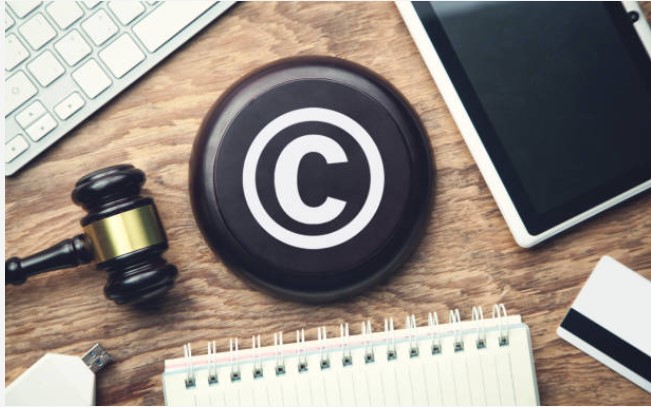Protection Of Fictional Character’s Copyright In The Digital Age
Introduction:
Whether they arise from literary, artistic, or cinematic works, fictional characters are born of greater productions. Unfortunately, copyright and trademark law do not provide particular protection for these characters, who, more often than not, exceed their original works to become well-known of their own. Superman, Wonder Woman, Sherlock Holmes, Tarzan, and other well-known characters are examples. Graphic and fictitious characters can be distinguished. A graphic character is one who can be shown in a cartoon or other graphic medium. A fictitious figure, on the other hand, is a word portrait whose physical form and characterization live in the reader’s mind.

Protection under Copyright Law
Characterization of a fictitious character is only protected under copyright law if the character is depicted in a copyrighted work. One problem with copyright protection for fictitious characters is that they frequently take on a “life of their own” that is unrelated to the narrative in which they first appeared. The issue is how to safeguard the fictional figure who chooses to live an autonomous life. Another issue is that a court may rule that a fictional character, even though it is integrated in a copyrighted work, is not entitled to copyright protection. Furthermore, even when a fictitious figure is protected, it is sometimes afforded less protection than graphic ones. The underlying reason for this differing level of protection is that fictional character parallels are typically less definite than those of graphic figures. Because fictional people are rarely represented by a single physical image, but rather by images that occur in the reader’s imagination, diverse fictional characters are essentially abstractions that are difficult to compare.
Although it is obvious that someone has copied a fictional character if they use identical or substantially similar language to describe them, what happens more frequently is a copying of more abstract character traits and elements that only conjure up a mental image of that character for the reader. In reality, none of the fictional character’s verbally described characteristics are as dominant as the graphic character’s visually depicted characteristics, so the copyright law distinction between an unprotectable idea and a protectable creative expression may prevent the fictional character from being protected.
Several tests were created to see if a certain character might be copyrighted. The “storey being told” test was developed in Warner Brothers v. Columbia Broadcasting Systems, 216 F. 2d 945, 950 (9th Cir. 1954), which held that if a character is not a prominent part of a story, it is not copyrightable, and others may use the character without infringing on the story’s copyright. However, it was eventually shown that this approach disqualifies the majority of characters from copyright protection. Judge Learned Hand thus devised the ‘distinct demarcation’ standard. In Nichols v. Universal Pictures Corp., 45 F.2d 119 (2d Cir. 1930), cert. denied, 282 U.S. 902 (1931), he noted that the less defined the characters are, the less copyrighted they can be; this is the cost an author must face for making them too indistinct.
Characters in the digital age:
The fast growing digital technologies and devices have moved much of the control previously held by media businesses over content dissemination and distribution to the user. Consumers are invited to use and transmit “bites” of copyrighted content via social networking sites, mobile television via cell phones and other handheld devices, online mobile game units with WiFi and other interactive capability, interactive television, and a variety of other interactive technologies.The fast growing digital technologies and devices have moved much of the control previously held by media businesses over content dissemination and distribution to the user. Consumers are invited to use and transmit “bites” of copyrighted content via social networking sites, mobile television via cell phones and other handheld devices, online mobile game units with WiFi and other interactive capability, interactive television, and a variety of other interactive technologies.
THE DOCTRINE OF FAIR USE
Much of what is permitted or prohibited in the digital realm is based on the idea of “fair use,” which serves a variety of goals, including permitting the user to engage in certain permitted activities. The theory is codified in Section 107 of the Copyright Act, which states that four non-exclusive reasons must be considered. The four factors are neither strict nor formulaic, nor are they simple to implement.
The fair use defence is both an express provision of the Copyright Act and a set of standards established by judges. More importantly, it is a fundamental copyright principle, not an afterthought or a “add-on.” The Act’s Section 107 directs courts to consider the four non-exclusive considerations listed below when determining whether the fair use defence applies:
- the purpose and character of the use, including whether it is for commercial or educational purposes;
- the nature of the copyrighted work;
- the amount and substantiality of the portion used in relation to the copyrighted work as a whole; and
- the effect of the use on the copyrighted work’s potential market for or value.
Fair use analysis is generally fact-specific as well as subjective, and the four variables frequently overlap. In general, today’s courts lay a premium on whether the use in question has changed the original material. The user is now the major emphasis of this new approach.
EXAMPLES OF FAIR USE OF CHARACTERS
While the fair use defence can be employed in a variety of ways depending on the facts of the case, the examples below show how it has been applied in the context of copyright infringement.
In DC Comics Inc. v. Unlimited Monkey Business, Inc., 598 F. Supp. 110 (N.D. Ga. 1984), the defendants in this case ran a singing telegram business that featured skits by characters dubbed “Super Stud” and “Wonder Wench,” who resembled Superman and Wonder Woman from DC Comics. The court determined that 1) the singing telegram business was a commercial use, 2) Superman and Wonder Woman embodied “original creative effort and resulted from substantial labour and expenditure,” 3) the defendants copied more of the characters than was necessary for an effective parody, and 4) the infringement harmed the potential market for Superman and Wonder Woman singing telegrams by applying the four fair use factors.
In United Feature Syndicate, Inc. v. Koons, 817 F. Supp. 370 (S.D.N.Y. 1993), the defendant was a sculptor who created only three sculptures with an unlawful exact replica of the “Odie” character from the “Garfield” comic strip. Despite the small number of infringing works, the court concluded that “there is little doubt that if the illegal use of the ‘Odie’ character in sculptures became widespread, [the copyright owner’s] prospective market for sculptures would be harmed.”
The case Lewis Galoob Toys, Inc. v. Nintendo of America, Inc., 964 F.2d 965 (9th Cir. 1992), included a “Game Genie,” a device that allowed players to change the appearance of characters in Nintendo video games. Individual users of the Genie were ruled to be engaging in fair use because: 1) the transformed characters were created only for personal use; and 2) there was no influence on Nintendo’s markets, as there was no indication Nintendo ever considered selling altered character versions of its games.
In Williams v. Columbia Broadcasting Sys., Inc., 57 F. Supp. 2d 961 (C.D. Cal. 1999), an Army unit made a film called “Sailor Bill,” which was based on the clay “Mr. Bill” character from Saturday Night Live and showed Sailor Bill as a helpless Navy sailor who was assaulted and injured by the Army. During the annual Army-Navy football game, CBS aired the video. The use was deemed fair because 1) it was partially non-commercial, as “members of an infantry division produced it with no eye toward financial gain”; 2) the film was crudely produced and only copied limited aspects of the Mr. Bill character; and 3) it was “unlikely that widespread broadcast of low-quality segments created by Army units would affect the market for Mr. Bill.”
Indian Scenario:
In India, there are extremely few instances involving the copyright-ability of fictitious characters, and even fewer cases involving fair use of a character (despite there being a statutory provision for the same i.e. Section 52 of the Copyright Act, 1957).
V.T. Thomas v. Malayala Manorama AIR 1989 Ker 49, which was the first case in India to establish the copyright-ability of fictional characters, is one of the most famous instances involving infringement of fictional characters. The court avoided delving into the specifics of the standards that must be met for fictional characters to be eligible for copyright protection. In this instance, the issue was who held the characters’ copyright. By determining that the characters were developed by Thomas, not in the course of employment, and thus he had copyright over his creation, the court impliedly acknowledged that fictitious characters can be copyrighted.
The plaintiff claimed in Star India v. Leo Burnett 2003(2) BomCR655 that the characters from their programme Kyunki Saas Bhi Kabhi Bahu Thi were utilised as a foundation for a tide detergent campaign, resulting in copyright infringement. In this case, the court agreed that copyright existed in fictitious characters, but did not address the issue of copyright-ability if the characters identified the threshold.
In Arbaz Khan v. North Star Entertainment Pvt. Ltd.2016 SCC On-line Bom 1812, the plaintiff claimed that the defendant plagiarised the character Chulbul Pandey from their Dabbang films in their Gabbar Singh film. The court reasoned that the Chulbul Pandey persona was unique, and that the portrayal of that character, as well as the “building up” of that character in an underlying literary work, were both capable of copyright protection. It is more than a character; it was depicted in a unique way and thoroughly developed, making it capable of protection.
Conclusion
Based on the aforementioned analysis, the actual conflict is between the inventor and creator of the characters, i.e., work that serves the public and is worthy of protection, and the exploiter who aims to profit by dissecting just enough of the characters to slip through the fair use fence. To date, the courts have generally sided with intellectual property owners against proponents of the “open internet” in most cases involving new media infringement. However, recent events have shifted the pattern. Because of the limited and brief nature of consumer-created video clips or networking site displays featuring characters, and the fact that single character traits rather than the entire character may be copied and incorporated in a new work, courts may continue to view such uses as de minimis under the doctrine of fair use. On the other hand, while Indian courts are eager to provide authors with copyright protection for their fictional characters, they have not yet delved deeply into the doctrine of fair use in this area. However, until explicit regulations connected to character merchandising are in place, it is critical for concerned parties to seek a licence from the copyright owner to avoid any negative consequences.
Author: Anuja Saraswat an intern at IP And Legal Filings, in case of any queries please contact/write back us at support@ipandlegalfilings.com.



